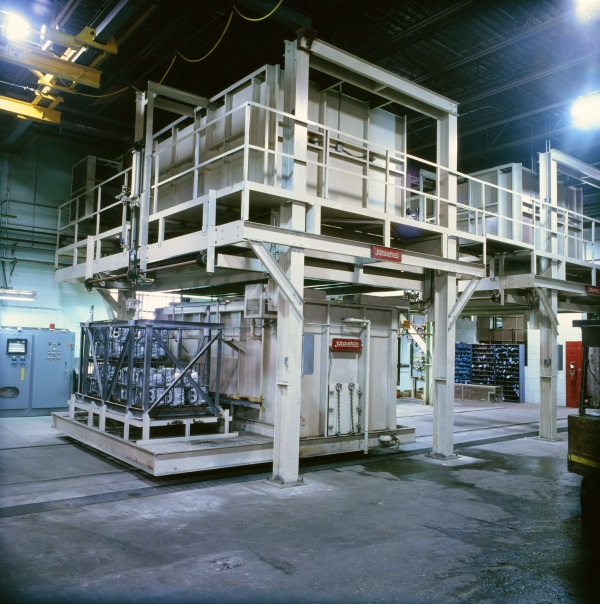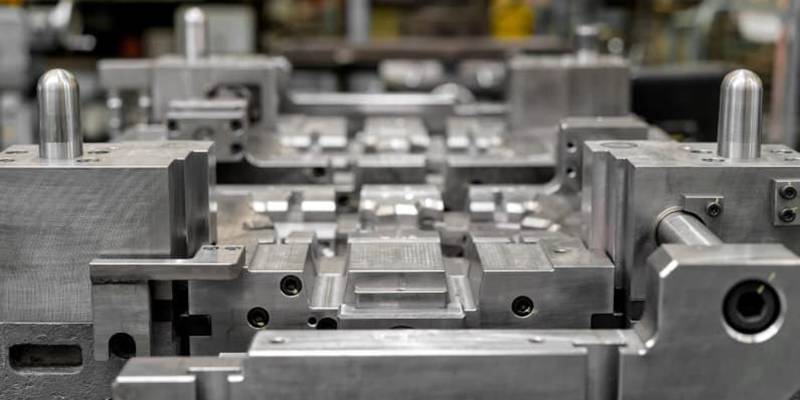Aluminum Foundry powers the future of modern aluminum casting solutions
Wiki Article
Comprehending the Various Kinds of Processes in An Aluminum Foundry for Effective Manufacturing
In An Aluminum Foundry, numerous casting processes play an important role in production efficiency. Each approach, from sand casting to pass away casting, uses distinct advantages that provide to particular manufacturing demands. Comprehending these procedures is crucial for enhancing quality and expense. The choice of casting technique can significantly affect total output. As foundries check out these alternatives, they need to think about which techniques align ideal with their manufacturing objectives. What factors will inevitably direct their decisions?Overview of Aluminum Foundry Processes
Aluminum Foundry processes incorporate a collection of specialized techniques targeted at transforming raw Aluminum right into functional parts. These processes typically start with melting the Aluminum, where primary or scrap Aluminum is warmed up until it gets to a liquified state. Once thawed, the Aluminum may undergo alloying, where details elements are included in enhance its homes, such as strength or corrosion resistance.Adhering to melting and alloying, the Aluminum is put right into mold and mildews to produce wanted shapes. Air conditioning and solidification happen, throughout which the product handles the kind of the mold. After solidification, castings are eliminated and might need additional processing, consisting of trimming, machining, or surface area therapy to achieve the last specifications. Quality assurance is essential throughout the process, making sure that the created elements fulfill sector standards. On the whole, Aluminum Foundry procedures are vital for generating a variety of lightweight and resilient products made use of in various applications.
Sand Casting Methods
A substantial portion of Aluminum spreadings are created making use of sand casting methods, which is a functional technique favored for its ability to develop intricate shapes. In this process, a mold is made from sand blended with a binding agent, guaranteeing it can endure the molten Aluminum's temperature level. The pattern, normally constructed from steel or plastic, is positioned in the sand to form the tooth cavity for the casting. After eliminating the pattern, the mold is full of molten Aluminum, which strengthens right into the wanted form upon cooling.Sand casting is particularly advantageous for reduced to tool production volumes as a result of its cost-effectiveness and adaptability. Additionally, it permits easy modifications of mold styles, accommodating different part geometries. It might not achieve the dimensional precision of other casting approaches, the surface area finish can be boosted through succeeding machining. On the whole, sand spreading stays a keystone of Aluminum Foundry processes, guaranteeing varied applications across markets.
Die Spreading Techniques
In the domain of die spreading methods, 2 primary processes stand out: the warm chamber and cold chamber methods. Each method offers special advantages and obstacles, particularly concerning efficiency and material compatibility. Additionally, the selection of die products plays an essential duty in identifying the general success and resilience of the casting procedure.Warm Chamber Process

Cold Chamber Process
Cold chamber die casting represents an alternative method for creating Aluminum components, specifically when managing steels that have greater melting points or when the molten metal is also reactive for warm chamber processes. In this strategy, molten Aluminum is put right into the die from an exterior ladle, which decreases the risk of contamination and permits greater convenience in alloy option. The procedure includes injecting the liquified steel into a cold die using a hydraulic piston, guaranteeing specific control over the injection rate and pressure. This approach is advantageous for producing intricate geometries and achieving high dimensional accuracy. It might require longer cycle times compared to warm chamber procedures, chilly chamber die casting is vital for details applications in Aluminum shops.Die Materials Choice
Choosing the suitable die products is important for enhancing the die spreading process and guaranteeing the longevity and efficiency of the mold and mildews. One of the most commonly made use of products include tool beryllium-copper, steel, and Aluminum alloys, each offering unique benefits. Tool steel is preferred for its durability and resistance to use, making it suitable for high-volume production runs. Aluminum gives superb thermal conductivity, assisting in efficient heat dissipation, while beryllium-copper alloys integrate strength and thermal administration residential or commercial properties, though at a higher price. Variables influencing the selection consist of the intricacy of the part, anticipated manufacturing quantity, and the particular Aluminum alloys being cast. Eventually, the right selection of die material can substantially improve efficiency and reduce total functional costs in Aluminum factories.Investment Casting Procedures
While different casting methods exist, financial investment spreading stands out for its capacity to create intricate shapes with high accuracy and superb surface area coatings. This process entails developing a wax pattern that is coated with a ceramic covering. When the shell solidifies, the wax is melted away, leaving a dental caries that is full of liquified Aluminum.Investment casting is especially useful for creating intricate geometries that would certainly be difficult or impossible to accomplish with other techniques. It enables tight tolerances, decreasing the requirement for extensive machining post-casting. In addition, the smooth surface area finish minimizes the demand for secondary operations, thus improving performance.
This technique is commonly utilized in sectors needing thorough elements, such as aerospace and medical sectors. The adaptability of financial investment spreading makes it possible for the production of both small and big quantities, making it an important alternative in Aluminum factories seeking to fulfill diverse manufacturing demands.
Permanent Mold Casting
Long-term mold casting is an approach that utilizes reusable mold and mildews to produce Aluminum parts, improving efficiency in production. This method uses numerous advantages, consisting of improved dimensional accuracy and surface area coating, making it suitable for different industrial applications. By understanding its procedure, advantages, and makes use of, one can appreciate its value in the Aluminum Foundry industry.Process Overview
Aluminum Foundry processes encompass different techniques, among which is long-term mold and mildew spreading. Aluminum Foundry This approach utilizes reusable mold and mildews, usually made from steel, enabling efficient manufacturing of Aluminum components. The process begins with preheating the mold and mildew to enhance fluidity and lower flaws. Molten Aluminum is then put right into the mold and mildew under gravity or stress, making certain precise filling and decreasing air entrapment. As soon as the Aluminum cools and solidifies, the mold is opened up to get the cast component. Long-term mold and mildew spreading is known for producing high-quality, dimensionally accurate components suitable for various applications. The strategy is particularly useful for high-volume manufacturing runs, as it substantially minimizes material waste and improves repeatability in making processes.Advantages of Strategy
Numerous casting techniques exist, permanent mold and mildew casting provides unique benefits that make it a favored option for lots of suppliers. This method enables remarkable dimensional precision and surface area finish, decreasing the demand for considerable machining. The multiple-use mold and mildews, usually made from steel, improve manufacturing effectiveness by enabling rapid cycle times and reduced overall product expenses. Additionally, long-term mold and mildew casting advertises improved mechanical buildings in the last product due to the controlled air conditioning rates, which lead to finer grain frameworks. Furthermore, as the procedure creates less waste contrasted to sand casting, it is a lot more eco-friendly. On the whole, these benefits add to cost-effectiveness and high-grade end results, making irreversible mold casting a calculated choice in the Aluminum Foundry market.
Applications in Industry
In numerous fields, permanent mold casting plays a crucial duty in generating top notch Aluminum elements, especially where precision and durability are paramount - Aluminum Foundry. This technique is commonly made use of in the automotive market for manufacturing engine blocks, transmission real estates, and various other important parts that need exact tolerances and durable efficiency. Moreover, the aerospace market take advantage of long-term mold casting for components that must withstand severe conditions while keeping lightweight features. In addition, consumer goods usually use this technique for producing long lasting and visually pleasing things, such as cooking equipment and decorative components. The capability to attain complex geometries and great surface area coatings makes long-term mold and mildew casting a recommended selection across diverse applications, ensuring reliable and trustworthy manufacturing in numerous industrial contextsMachining and Finishing Procedures
Precision machining and completing operations play an essential function in the Aluminum Foundry process, ensuring that cast parts fulfill strict quality and dimensional requirements. These operations involve various methods, such as milling, turning, boring, and grinding, which are used to improve the surface areas of cast components. Each method is chosen based on the specific needs of the part, including its dimension, shape, and designated application.Finishing procedures, such as anodizing and surface area polishing, improve the aesthetic appeal and corrosion resistance of Aluminum components. In addition, these procedures help attain tighter tolerances and smoother finishes, which are essential for performance in various commercial applications.
Quality Assurance in Aluminum Foundries
Quality assurance in Aluminum shops is a crucial component that ensures the honesty and efficiency of actors items. This procedure includes methodical assessments and screening at various stages of manufacturing. Factories apply rigorous quality checks, including aesthetic inspections, dimensional dimensions, and material analysis, to determine that every cast meets defined standards.Furthermore, advanced techniques such as non-destructive screening (NDT) are employed to spot interior issues that may not be noticeable on the surface. By keeping an eye on variables like temperature level and alloy composition, factories can maintain perfect manufacturing conditions, decreasing the likelihood of flaws.
Adherence to industry standards, such as ISO qualifications, reinforces a factory's dedication to quality. Constant training and advancement of personnel additionally play an important role in cultivating a culture of high quality understanding. Eventually, reliable high quality control methods enhance customer contentment and reduce costly rework and scrap, assuring the Foundry's one-upmanship on the market.
Frequently Asked Concerns

What Safety And Security Steps Are Essential in An Aluminum Foundry?
Precaution in An Aluminum Foundry include correct individual protective tools, ventilation systems to take care of fumes, fire avoidance protocols, normal equipment upkeep, staff member training on hazards, and emergency situation reaction prepares to deal with potential accidents effectively.How Does Recycling Aluminum Affect Foundry Processes?
Reusing Aluminum significantly affects Foundry processes by minimizing raw product costs, decreasing waste, and reducing energy consumption. This green strategy enhances manufacturing effectiveness while advertising sustainability, ultimately profiting both the Aluminum and the atmosphere sector.What Are the Ecological Influences of Aluminum Foundries?
The environmental effects of Aluminum shops consist of air and water pollution, high power consumption, and considerable greenhouse gas discharges. These factors add to habitat damage and health and wellness dangers for surrounding areas, requiring boosted sustainability techniques.How Do Factories Manage Waste and Emissions?
Factories handle waste and discharges via numerous methods, consisting of recycling scrap metal, applying filtration systems, and sticking to ecological policies. These actions intend to reduce ecological effect while keeping operational performance and efficiency.What Is the Duty of Automation in Aluminum Foundries?
Automation in Aluminum factories improves effectiveness and precision. It decreases human mistake, enhances production procedures, and decreases labor expenses. By integrating sophisticated technology, factories can boost product top quality and guarantee constant functional performance.Aluminum Foundry processes include a collection of specialized techniques intended at transforming raw Aluminum right into functional elements. These procedures generally begin with thawing the Aluminum, where primary or scrap Aluminum is heated up till it reaches a liquified state. The hot chamber process is a highly efficient die casting approach generally made use of for Aluminum alloys. Cold chamber pass away casting represents an alternate method for producing Aluminum components, especially when dealing with steels that have higher melting factors or when the molten metal is as well reactive for warm chamber procedures. Aluminum Foundry. Aluminum Foundry processes encompass numerous methods, one of which is permanent mold spreading
Report this wiki page